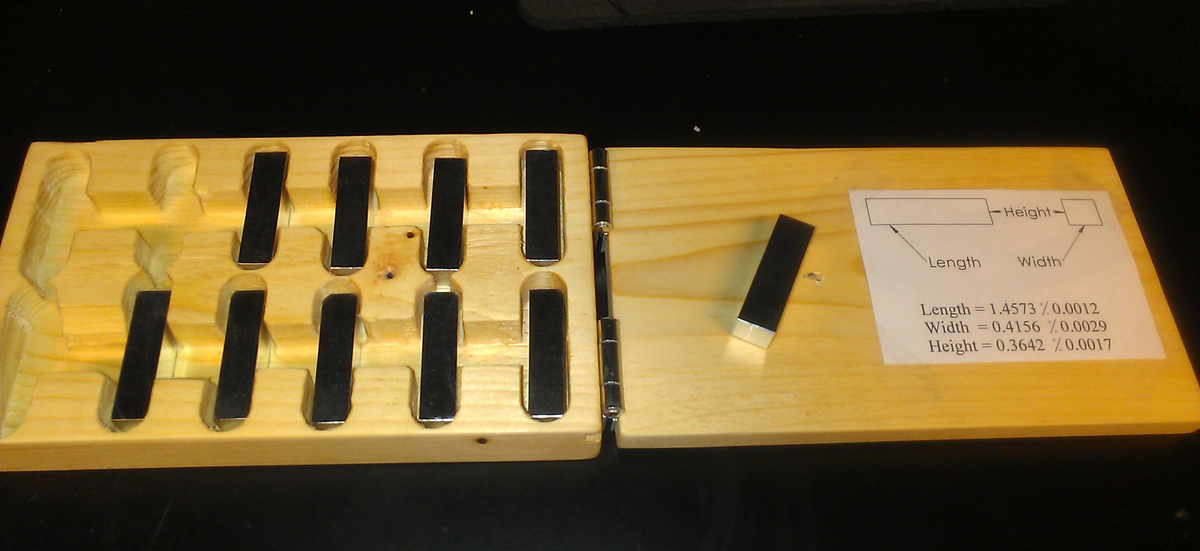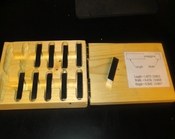[8.28.14] Precision Identical Cuboids - Junior Lab

Description of Project
This project was aimed at creating multiple cuboids of roughly identical size.
Processes Applied:


Summary:
In science, one of the most important issues you will face in experimentation is systematic error. These errors generally come from the measuring instrument or the method in which you measured. For more information about this, you can search for Systematic Error and Random Error, Wikipedia Article Link.
So in Junior Lab. at MIT, one of the first-day activities is to be directly introduced to this issue so that you might become more aware of what types of things could cause it. Hence the need for identical cuboids, which we can have students split into groups and measure 'identical' objects. In the exercise, we have the students measure the Length, the Width, The Height, as well as providing them with the density of the Aluminium alloy used so that they can use their measurements to calculate the weight of the cuboid. In closing of the exercise, we take in all the measurements of the class and have the students calculate the uncertainties of the whole class's measurements for homework.
These cuboids were made on a mill using a mixture of regular milling and fly cutting. My main operations were to get the shape roughly identical on all 10 cuboids. Once this was achieved I used the fly-cutting operations to slowly face all cuboids at once. In the fly cutting operation, it is important to do opposing sides in pairs before continuing to other pairs. This allows you to use the now known flat sides for your mounting/mating surfaces (Parallel Bars and vice faces). It is also quite important when fly cutting uneven surfaces to cut in small vertical increments so as not to cause any undue stress on the tool or introduce any shearing forces which could displace your part in the vice.
Once all the parts were made, I verified their quality by measuring each cuboid's X, Y, Z dimensions in two places with a micrometer. After this step, I calculated the average of the dimensions as well as my error based on my measuring device.
It is important to note that the students will be using imprecise plastic rulers to introduce them to measurement device intrinsic error. In this case, there are some imperfections in how the rulers are made... mainly the measurement marks are printed on.
